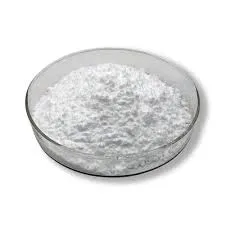
kol . 08, 2024 12:25 Back to list
Effective Methods for Dissolving Hydroxyethyl Cellulose in Various Solvents and Conditions
How to Dissolve Hydroxyethyl Cellulose
Hydroxyethyl cellulose (HEC) is a water-soluble polymer derived from cellulose. It has gained wide acceptance in various industries due to its diverse applications, including pharmaceuticals, cosmetics, food, and construction. HEC is primarily used as a thickening agent, gelling agent, and film-forming agent. However, effectively dissolving hydroxyethyl cellulose can sometimes pose a challenge, especially for those new to handling this versatile compound. This article provides a comprehensive guide on how to dissolve hydroxyethyl cellulose properly.
Understanding Hydroxyethyl Cellulose
Before delving into the dissolution process, it is essential to understand the nature of hydroxyethyl cellulose. HEC is non-ionic and forms a gel-like consistency when mixed with water. Its unique properties make it an excellent ingredient in many formulations, but it also means that dissolving it requires some specific handling techniques to avoid clumping and achieve an even consistency.
Steps for Dissolving Hydroxyethyl Cellulose
1. Choose the Right Concentration The first step in dissolving HEC is to determine the desired concentration for your application. HEC can be dissolved in various concentrations, depending on its intended use. Typically, concentrations range from 0.5% to 5% (w/v).
2. Prepare the Water When dissolving HEC, the quality and temperature of the water are crucial. Use distilled or deionized water to avoid impurities that may affect the HEC's performance. It's also beneficial to use warm water (around 60°C or 140°F), as heat can facilitate the dissolution process. However, ensure that the temperature does not exceed 75°C (167°F), as high temperatures might degrade the polymer.
how to dissolve hydroxyethyl cellulose

3. Gradual Addition To prevent clumping, gradually sprinkle the hydroxyethyl cellulose into the warm water while continuously stirring. Do not dump the entire powder into the water at once, as this can lead to the formation of lumps. Use a mechanical stirrer or a high-shear mixer if available for better results.
4. Mixing Continue stirring the mixture vigorously. If using a manual method, whisk the solution to incorporate air into it and promote even distribution of the HEC. It's important to maintain a continuous motion during this step to prevent any agglomeration of the powder.
5. Hydration Time Allow the mixture to sit for a while after all the HEC has been added. This hydration time is crucial as it enables the granules to absorb water and swell, leading to proper dissolution. Typically, allowing the mixture to sit for 30 minutes to an hour is sufficient. If necessary, you can re-stir the mixture to ensure uniformity.
6. Adjust Viscosity After the HEC has dissolved, you may notice that the solution is thicker than expected. If this occurs, you can dilute the solution with more water to achieve your desired viscosity. Always add water gradually and mix well to avoid sudden changes in consistency.
7. Final Mixing Once you reach the desired concentration and viscosity, give the solution a final thorough mixing to ensure an even distribution of hydroxyethyl cellulose throughout the liquid.
Conclusion
Dissolving hydroxyethyl cellulose may seem challenging, but following the correct steps can yield excellent results. Remember to use the right water quality and temperature, add HEC gradually, and allow for sufficient hydration time. By mastering these techniques, you can effectively incorporate HEC into your formulations, enhancing their performance and stability. Whether for personal or industrial use, these guidelines will help you achieve a smooth, consistent mixture every time.
-
Versatile Hpmc Uses in Different Industries
NewsJun.19,2025
-
Redispersible Powder's Role in Enhancing Durability of Construction Products
NewsJun.19,2025
-
Hydroxyethyl Cellulose Applications Driving Green Industrial Processes
NewsJun.19,2025
-
Exploring Different Redispersible Polymer Powder
NewsJun.19,2025
-
Choosing the Right Mortar Bonding Agent
NewsJun.19,2025
-
Applications and Significance of China Hpmc in Modern Industries
NewsJun.19,2025







